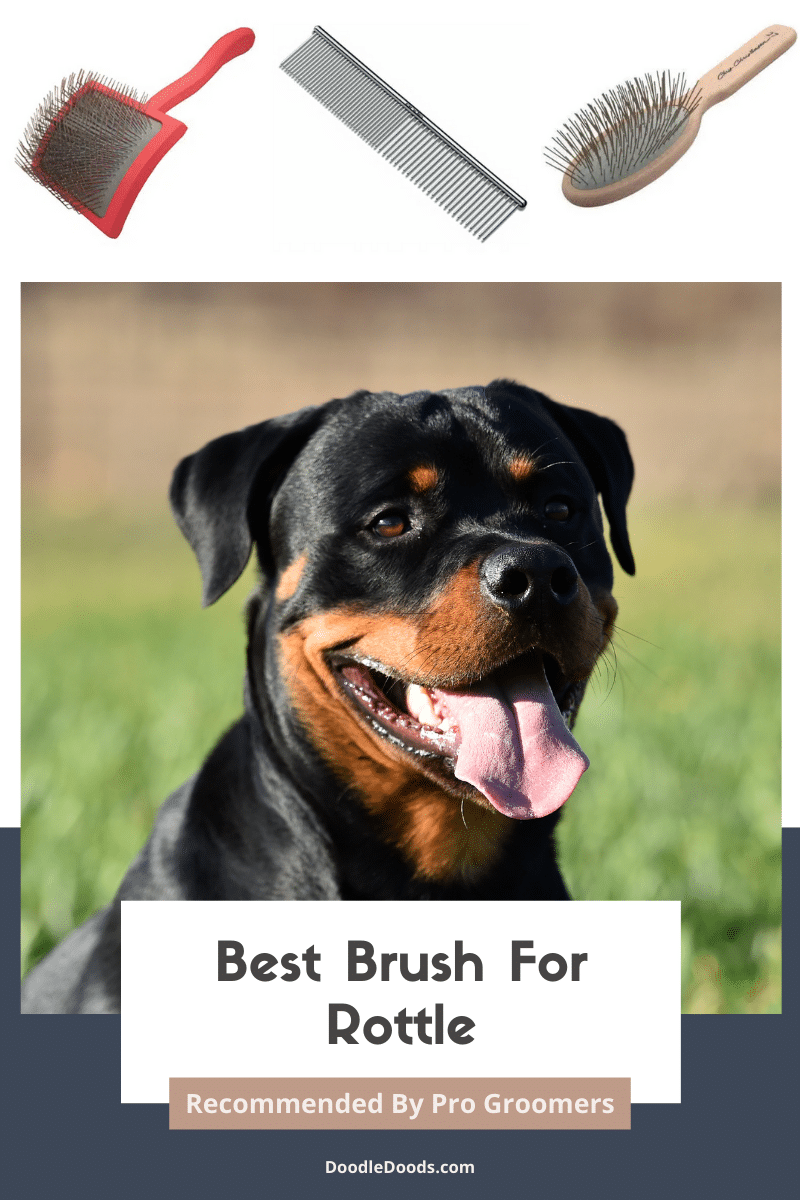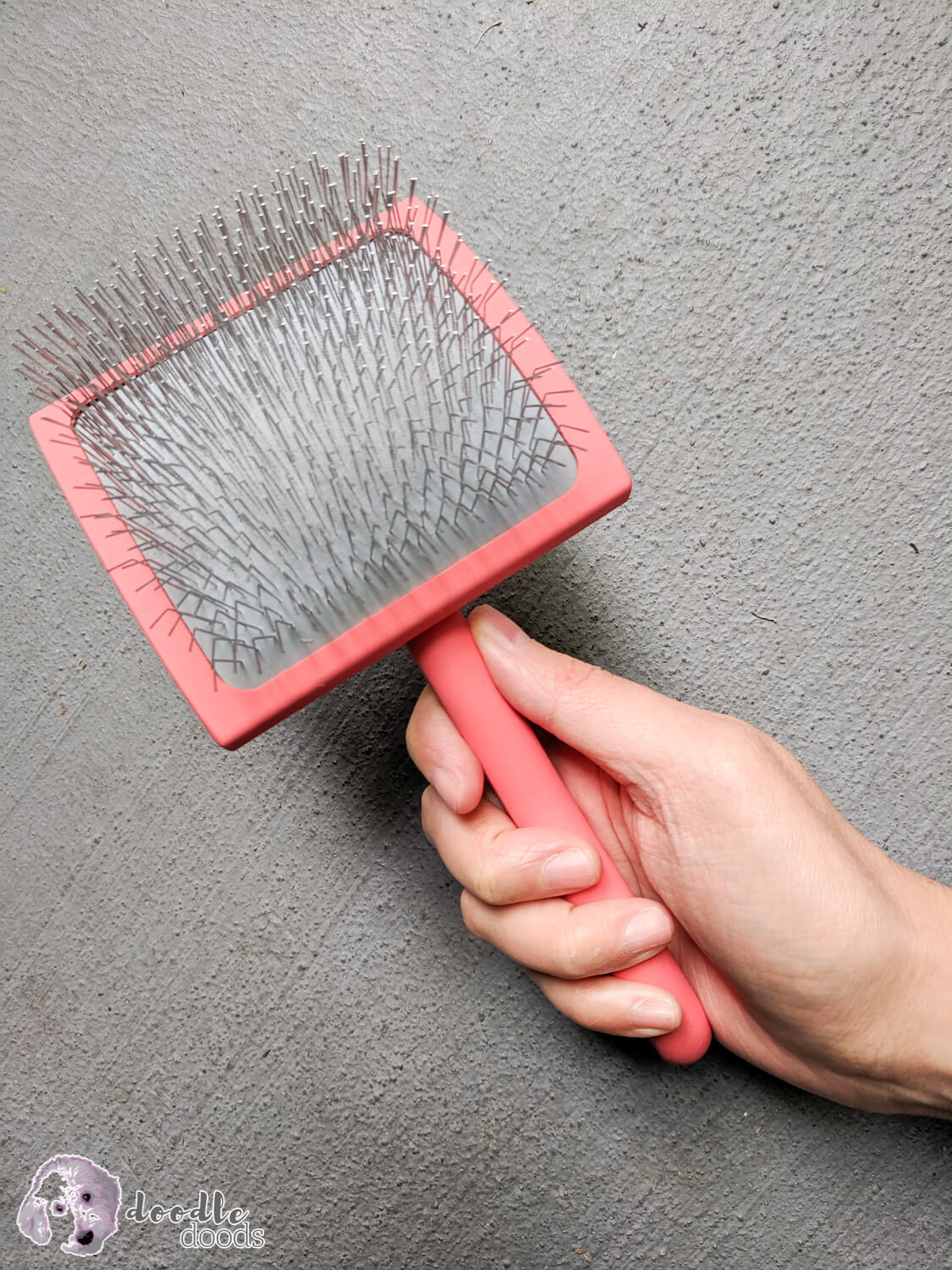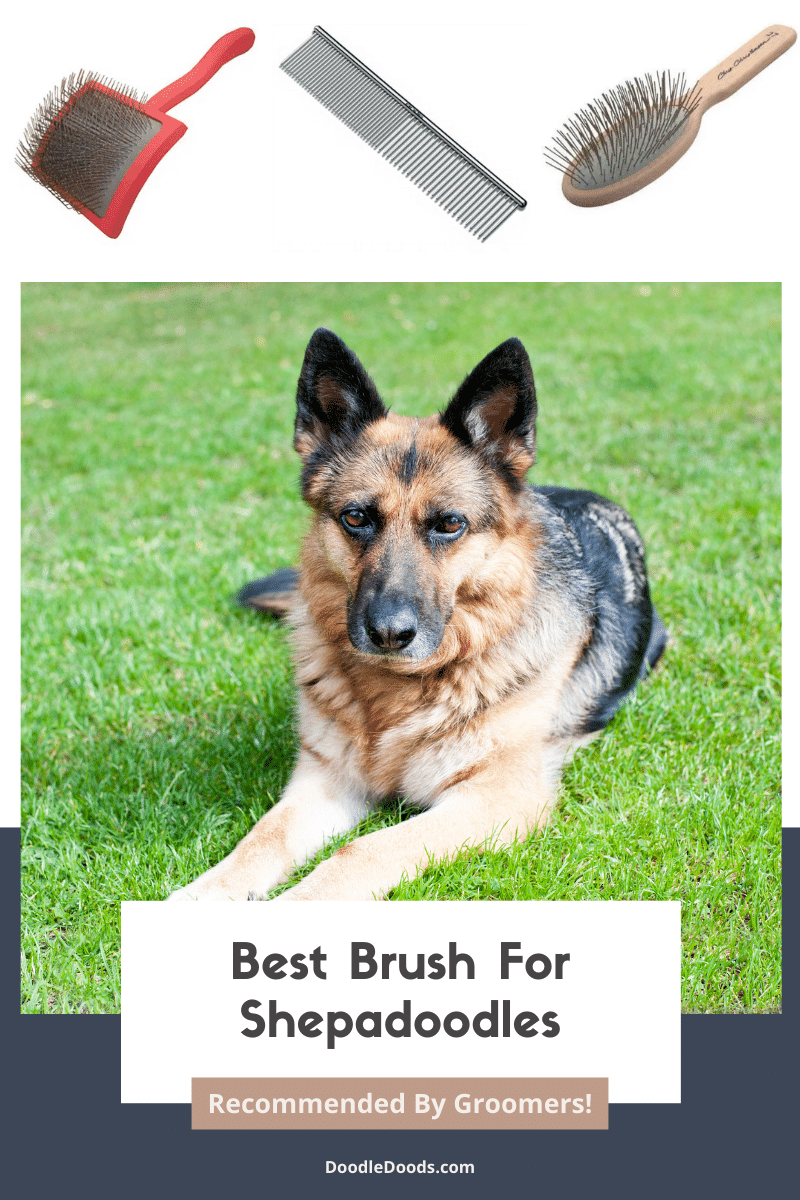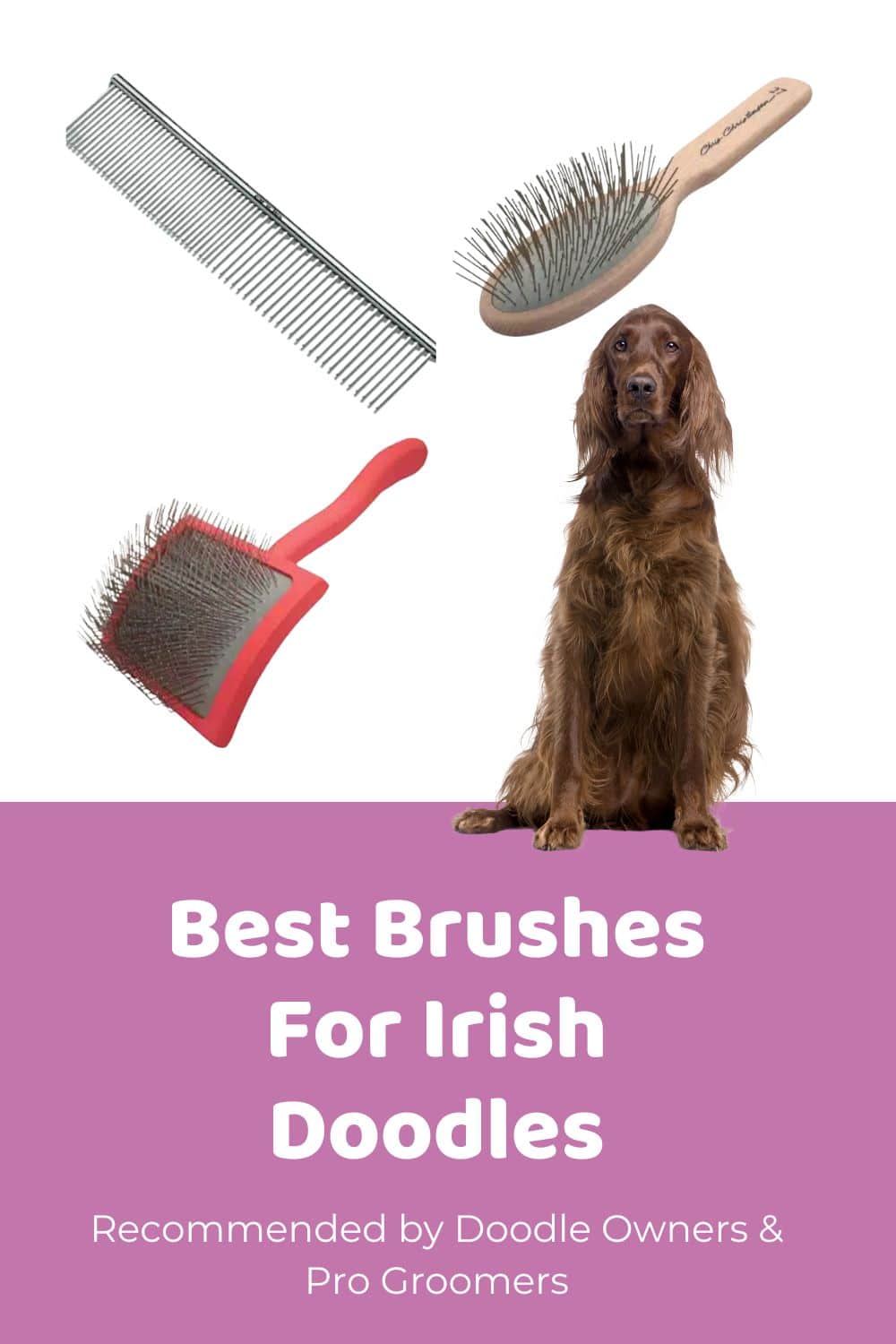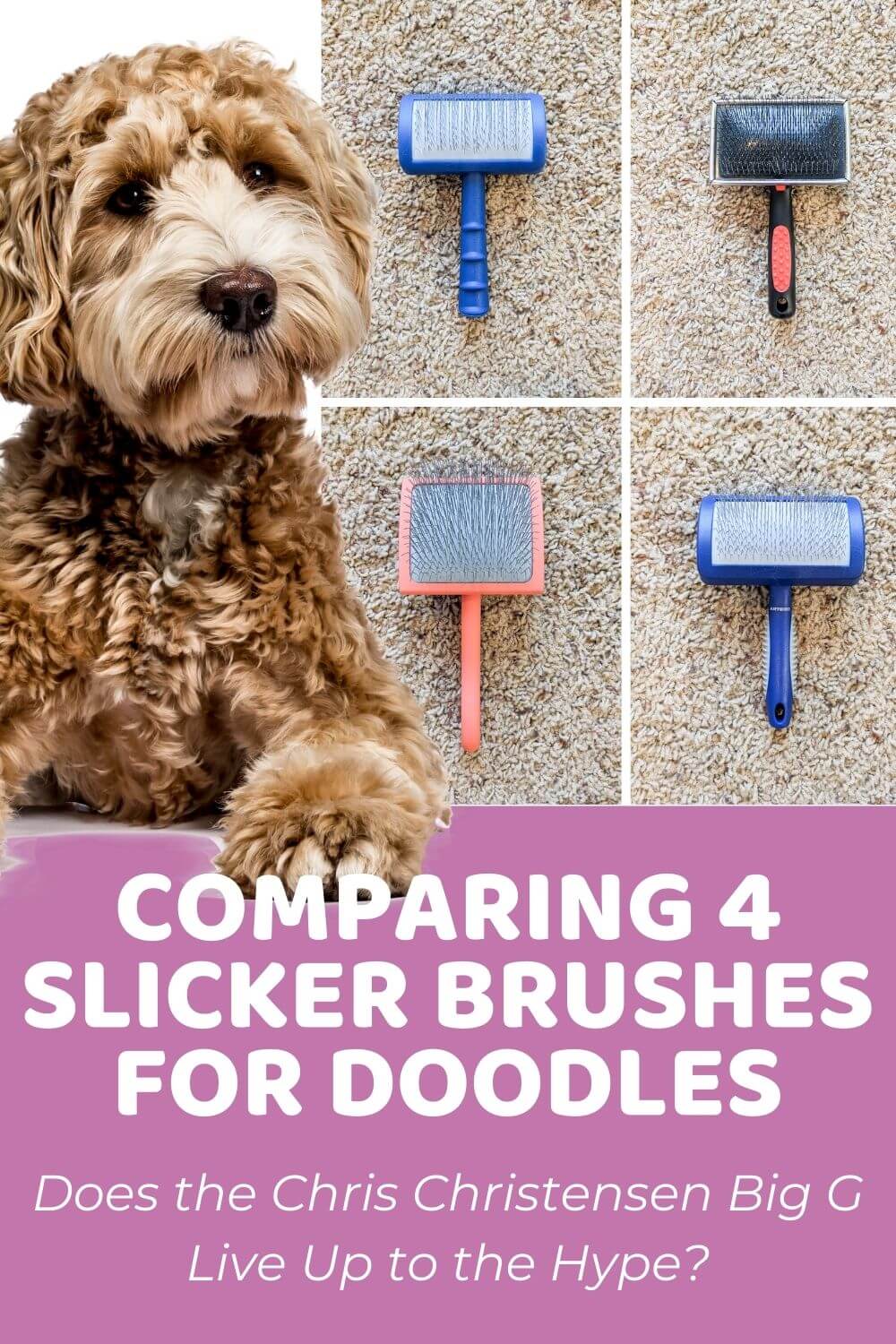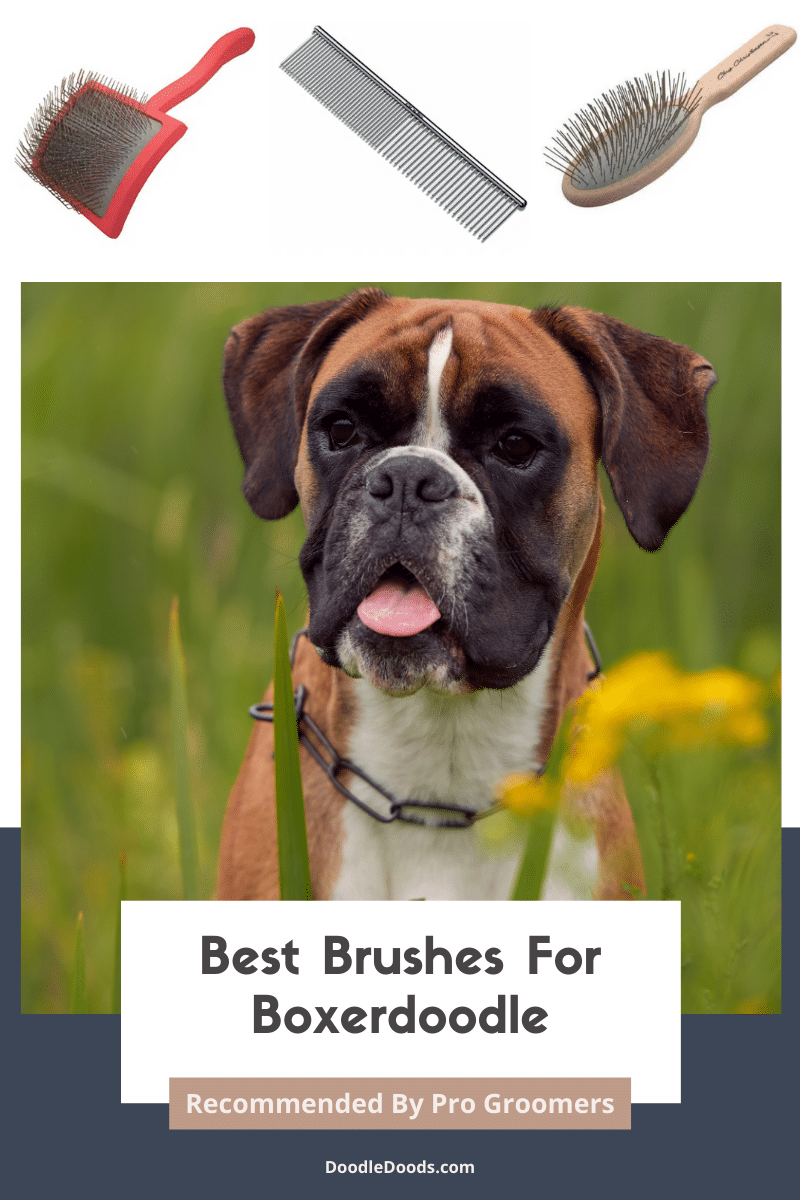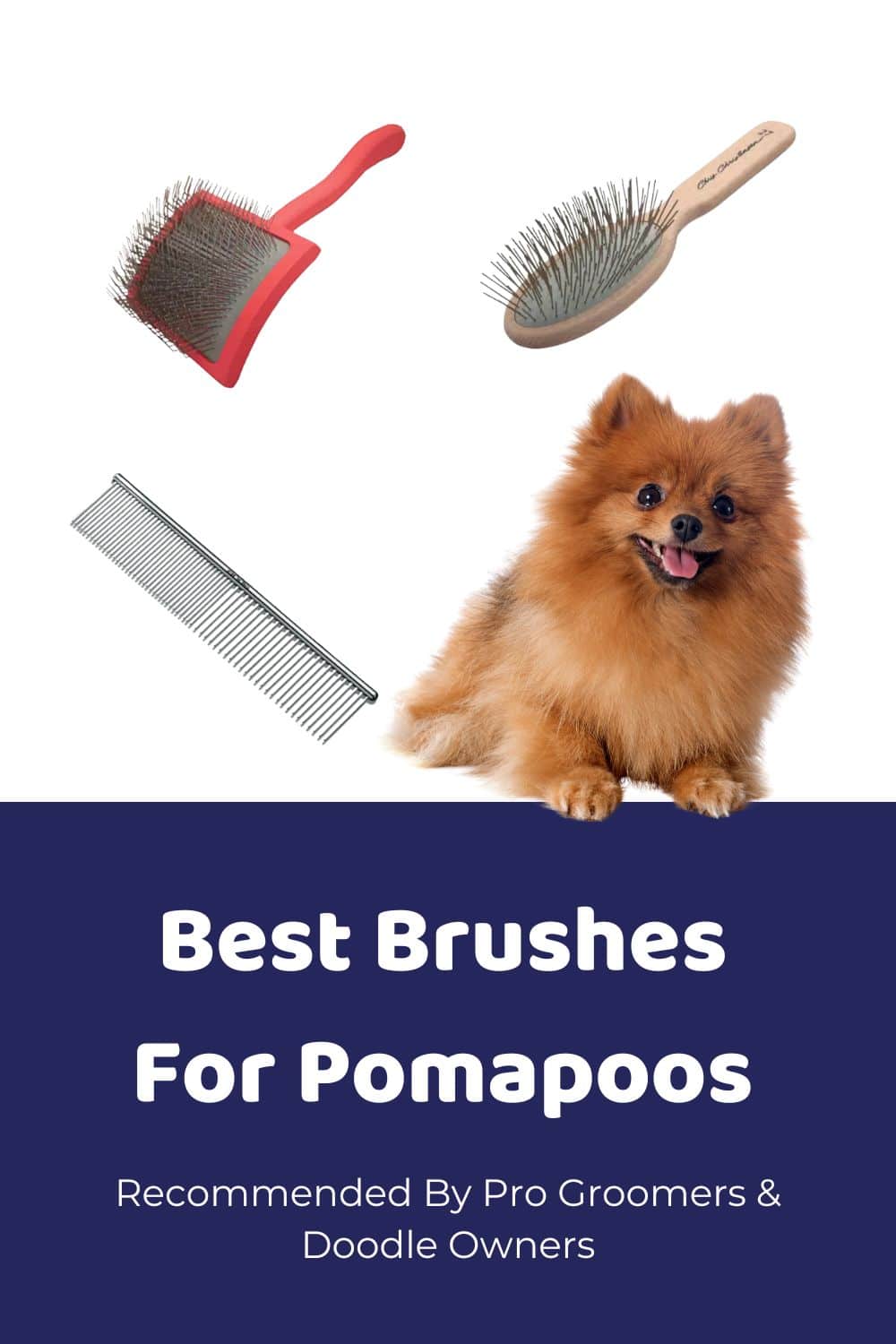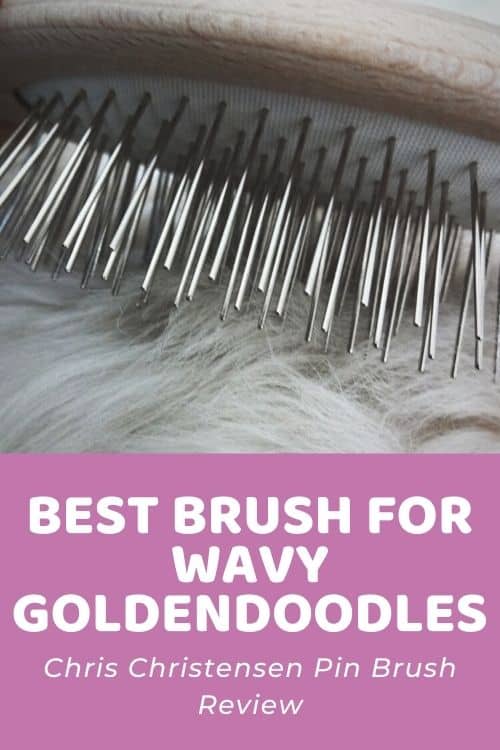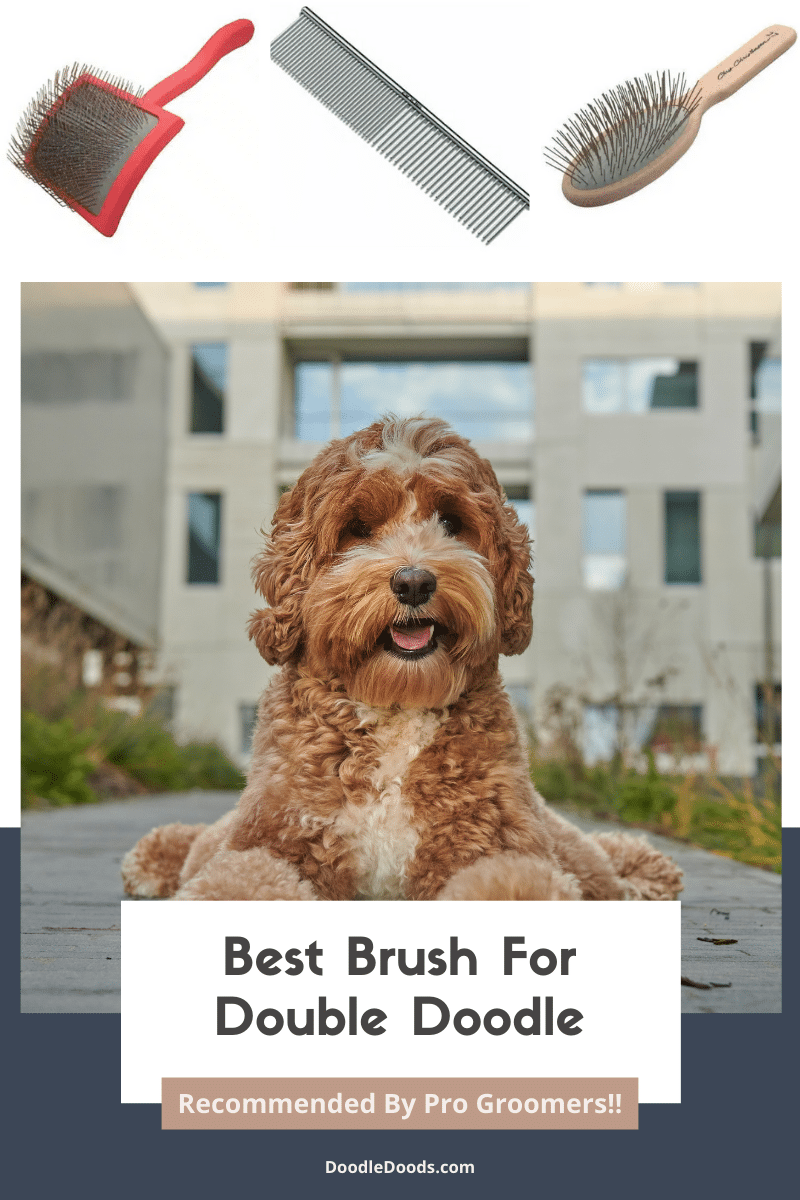The vast world of dog grooming brushes is pretty much endless. And choosing the best brush for Rottle will not make for the easiest of tasks. There are bristle brushes, pin brushes, slicker brushes, and undercoat rakes just to name a few. But which one should you choose for your Rottle pup? That’s exactly what we’re going to help you figure out in this very guide. So, keep on reading to learn how to choose the best brush for your Rottle and how to keep your precious pal’s coat fluffy, mat-free, and of course, cute to look at.
Table of Contents
- Choosing The Best Brush For Rottle: Types Of Popular Rottle Brushes
- What Is The Best Brush For Rottle?
- Best Brush For Rottles: Reviews With Pros & Cons
- Best Brush For Rottle: Honorable Mentions
- How Choosing The Correct Brush For Your Rottle Can Help Prevent Matting?
- How Often Do You Have To Groom A Rottle?
- How To Brush A Rottle Properly?
- Best Brush For Rottle: FAQs
Choosing The Best Brush For Rottle: Types Of Popular Rottle Brushes
The Rottle is one of those newer hybrid breeds that’s made up of the Rottweiler and Poodle. Athletic and muscular, sweet and loving, intelligent and witty, and hypoallergenic – these Doods make pretty much the perfect companions for people who adore both Rottweilers and Poodles.
But even though Rottles are hypoallergenic, it does come at a cost. Like other Doodle breeds, Rottles need to be groomed often to prevent those nasty mats from forming and ruining your fur baby’s gorgeous coat.
In this guide, we’re going to focus on the most important step in any Rottle’s grooming routine, which is brushing. But although doing the work consistently is super important to keep your Rottle’s coat healthy and beautiful, it’s just as important to choose the right kind of grooming tools for doing the job.
As we know, there are tons of different dog grooming brushes available for you to purchase. Let’s take a closer look at the two types of dog brushes that are best suited for Rottles.
Slicker Brush
Slicker brushes are the best types of dog grooming brushes for Rottles. That’s due to the fact that slicker brushes are the most effective at detangling and deshedding even the thickest, most textured coats. In fact, slicker brushes were designed for this very reason – to work through even the most high-maintenance coats!

What’s also great about a slicker brush is its design. A slicker brush will feature an ergonomic handle, making it easier to use it for extended periods of time. In addition to that, slicker brushes also have wide paddles that let you cover large portions of hair at once.
Still, you’ll be able to find different types of slicker brushes, they can vary in size, the handle can be of different lenght, the pins can be either smaller or larger, as well as the materials of the pins and overall construction can differ. For Rottles, we recommend larger-sized slicker brushes that have stainless steel or metal pins.
Pin Brush
Then there are pin brushes that can be great alternatives for Rottles that aren’t super mat-prone. That’s because pin brushes in general aren’t as effective as slicker brushes. So, this is an important thing to think through before making the purchase. After all, the brush should be effective at detangling and deshedding the coat.
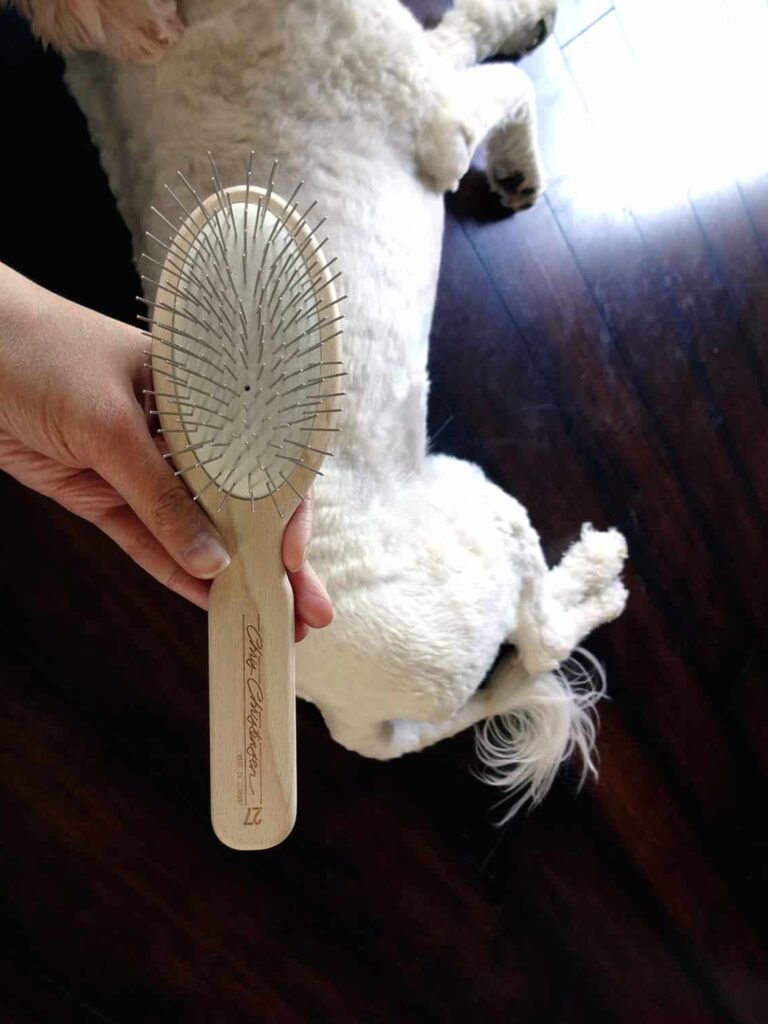
Pin brushes aren’t much unlike our usual oval-shaped human hair brushes. But before you reach for that old brush that’s been sitting in your drawer for years now, we do strongly recommend you get your pooch one that’s specifically designed for dogs.
One reason is that dog brushes have been designed to tackle the unique texture and nature of dog fur. Secondly, pin brushes usually have polished tips for your dog’s safety. Also, many human pin brushes have either plastic or wooden pins that certainly won’t be able to do much on a Rottle’s coat. Like with slicker brushes, you should aim to find pin brushes with stainless steel pins.
Metal Or Stainless Steel Comb
In addition to a dog grooming brush, every single Rottle needs a good quality stainless steel or metal comb in their grooming kit. In fact, if you can only purchase one grooming tool for your pooch, then this will be it.
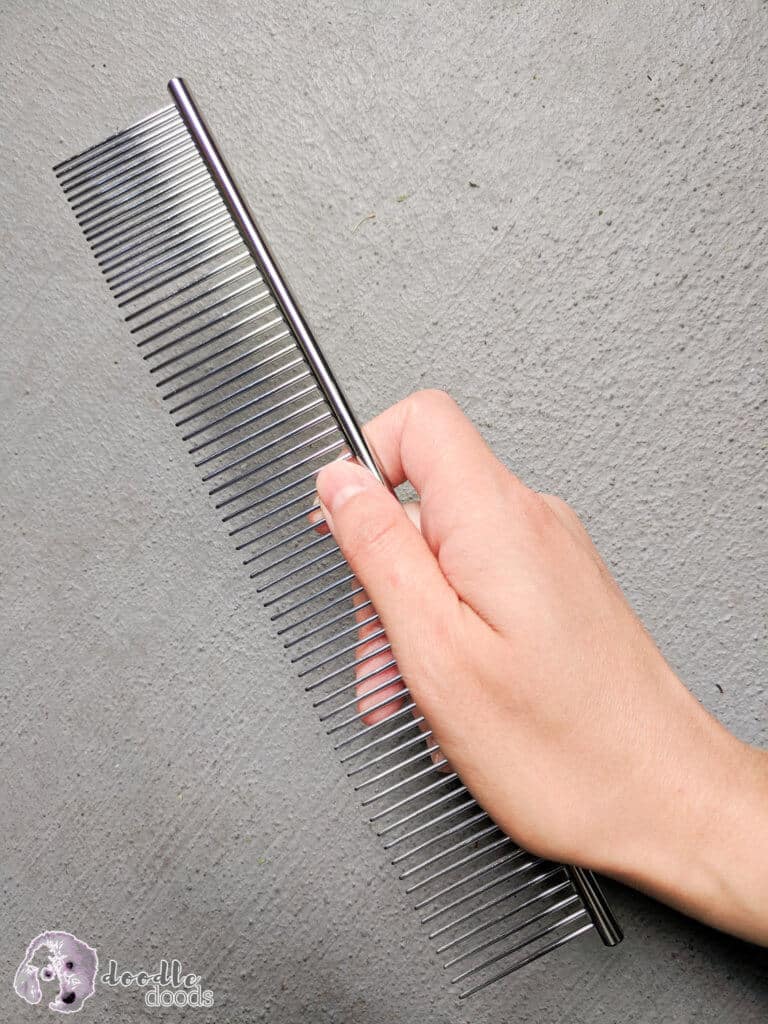
A sturdy comb is absolutely necessary to get rid of those worst knots and mats that often form in Rottles’ coats. Comb is the best tool for detangling mats from the fur, leaving behind a smooth, fluffy, and manageable coat. And yes, a brush alone won’t be able to detangle the whole coat effectively.
As you can probably guess, a brush also won’t be able to reach all of those nooks and crannies where the most stubborn knots tend to form. And that’s where a comb comes in handy. Your trust metal comb will be very helpful for detangling the hair on the face, behind the ears, between the paw pads, and other smaller areas.
Like with other grooming tools, stainless steel and metal is the way to go. Stainless steel combs are much more durable, lasting you a long, long time. Likewise, they’re very sturdy, making them easier to grasp onto and use.
What Is The Best Brush For Rottle?
So, what’s the best brush for Rottle? We talked about slicker brushes and pin brushes, but how should you make the choice when shopping for a brush for your pup? Are there any other factors to take into account before buying a brush for your pal?
Although the first instinct for many of us would be to purchase the first dog grooming brush we come across, it’s not quite that easy with Rottles. You have to understand your Rottle’s coat type, but also consider their hair length, and even their overall size.
An often overlooked thing about dog grooming brushes is the pin size. This is especially important for Rottles that have longer hair, as the pins must reach to the very root of the hair, up to skin. Otherwise, all of those mats will still be left behind, getting worse and worse.
Additionally, the size of your Rottle is also something to consider. These pups come in Mini and Standard size, the smallest of them weighing as little as 30 pounds, and the largest up to 100 pounds. There’s quite a big difference! So, for larger Standard Rottles it would make sense to get a larger dog grooming brush, whereas you can comfortably use a smaller brush on a minuscule Mini Rottle.
And let’s not forget, not all brushes are the same in terms of quality, ease of use, and effectiveness. The materials and the construction of the brush play a huge role here. For starters, you wouldn’t want the brush falling apart after just a few uses. Also, it’s not really sensible to buy a brush that constantly gets stuck in the fur or is otherwise uncomfortable for you to use.
Best Brush For Rottles Based On Their Coat Type
The purebred Rottweiler and Poodle couldn’t have any more different coat types. The Rotteweiler has a short, smooth, and straight coat, whereas the Poodle has a thick and textured, curly coat that seems to grow almost endlessly. There’s another big difference between their coat types – Poodles have a single layer of fur, whereas Rottweilers are double-coated.
But when we combine them to breed Rottles, you can see how not all pups will turn out the same. Even though most Rottles inherit a wavy combination coat, they can also come with curly Poodle-like hair or more straight and shaggy coats. So, it shouldn’t come as a surprise that when choosing the best brush for your Rottle, you need to understand your dog’s coat type and how their grooming needs may differ.
Curly Coat
The curly coat most resembles the Poodle’s tight curls that come in dense layers. Much like the purebred Poodle’s coat, a curly-coated Rottle will have just one single layer of fur, without a shedding undercoat. This means that curly-haired Rottles are the most hypoallergenic out of the three possible coat types.

But the thing to remember with curly-haired Doods is that they’re the most prone to matting and also the most high-maintenance. They need to be brushed consistently to prevent matting and to keep their coat and skin healthy. That’s because curly coats trap in loose dog hair, dust, debris, and dirt very easily. And if you don’t brush it out, all of this will quickly lead to matted hair.
Based on that, the best brush for Rottles with curly coats is a heavy-duty slicker brush. Preferably something that’s specifically designed for very dense and textured coats.
Wavy Coat
As we mentioned, the most common coat type seen on Rottles is the wavy coat. If your Rottle has a wavy coat, it’s not exactly curly, but not quite straight, either. Thanks to this, it’s much easier to manage and groom than the curly coat. It’s usually not as textured and it’s easier to brush through.
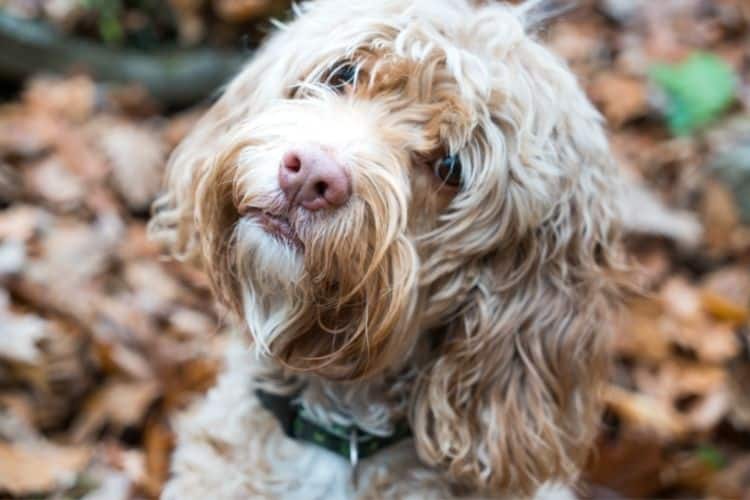
However, keep in mind that some Rottles with wavy coats may inherit a lightly shedding undercoat. Although some wavy-coated Rottles may have just one layer of fur, that’s not always the case. So, if your pup has an undercoat, you’ve also got to make sure that you get rid of all the loose, dead hair from the depths of the fur. Again, if you don’t brush it out, it can lead to matting.
For wavy-coated Rottles, both slicker and pin brushes are good choices. But if your Rottle has a very thick coat, a slicker brush might be a better option.
Straight Coat
Indeed, the straight coat is usually not the most desired coat type. That’s simply because it’s the least hypoallergenic and it generally sheds some hair. For this reason, we’d advise severely allergic people against adopting a straight-coated Rottle. Nonetheless, even these Doods tend to benefit from their Poodle heritage, shedding less than their Rottweiler parents.
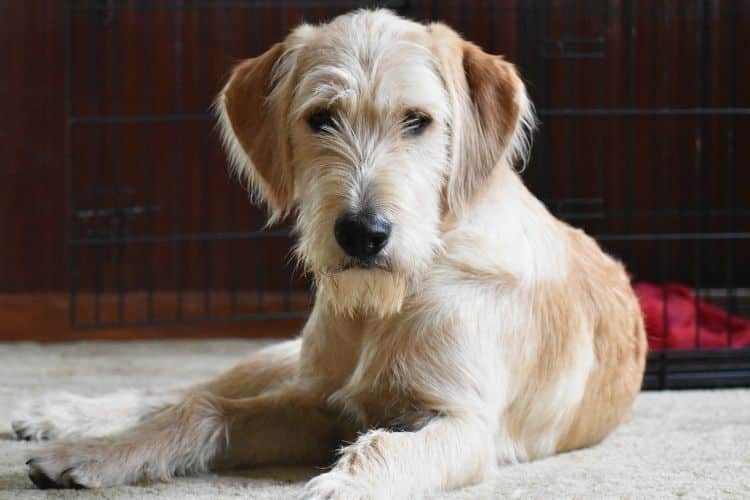
As you probably guessed already, straight-haired Rottles usually come with a shedding undercoat. Again, your focus now isn’t only on detangling the coat, but also deshedding it from dead hair. Since both pin and slicker brushes can be excellent for detangling and deshedding the coat, both of these options would be great considerations for straight-coated Rottles.
Best Brush For Rottles: Reviews With Pros & Cons
Chris Christensen Big G Slicker Brush
The absolute best brush for Rottles is the Chris Christensen Big G Slicker Brush. Professional groomers love it, Doodle owners love it, and we love it. It’s simply that good! What makes it so special is the effectiveness of this brush. With this slicker brush, those grooming sessions are quite literally cut in half. After all, it’s designed for very thick and textured coats, just like the Rottle sports.
The long bended pins that sit on a wide paddle are perfect for detangling and deshedding the coat quickly and easily. We also love that this slicker brush has a longer-than-usual handle that’s covered in non-slip material, making those already short grooming sessions very comfortable. And by the way, the bended pins will also lift up the hair, making it even fluffier.
Pros
- Perfect for detangling very thick and tangle-prone Doodle coats;
- Extra long handle with non-slip material to prevent arm fatigue;
- Wide paddle and long pins let you achieve fast results;
- Extremely high-quality construction and comfortable design;
- Available in three sizes: large, medium, and Baby G.
Cons
- Quite expensive, but it’s an investment for sure!
The verdict: The Chris Christensen Big G Slicker Brush is the best brush for Rottles with curly coats, but can also be used on wavy and straight-coated Doods. For puppies, we recommend the smallest Baby G version of this slicker brush.
Chris Christensen Original Series Oval Pin Brush
Another great choice for Rottles is the Chris Christensen Original Series Oval Pin Brush. Now, keeping in mind that this isn’t as effective as their Big G, it’s better suited towards Rottles with wavy and straight coats.
This pin brush might look like any other, but don’t let the looks fool you. It’s just as high-quality as the Big G. This pin brush is made from lightweight beechwood that’s easy to grasp, but also very sturdy and durable for many years to come. The brush features stainless steel pins that have polished tips, making the brushing sessions safer and more comfortable for your Dood. In fact, those pins will give your pup a nice massage whilst you groom them.
This pin brush comes in three sizes, each of them also having different sized pins. So, be sure to pay attention to the size of the pins when purchasing it!
Pros
- Very affordable, yet high-quality dog brush;
- Extremely smooth stainless steel pins;
- Lightweight and comfortable to use;
- Available in three sizes and pin lengths: 20mm, 27mm, and 35mm.
Cons
- Not as effective as the Big G slicker brush.
The verdict: The Chris Christensen Pin Brush is the best brush for Rottles with wavy and straight coats that aren’t as prone to tangles and mats.
Andis Steel Greyhound Comb
We know that a good brush alone won’t get the job done. Needless to say, our guide would not be complete without a high-quality comb. The Andis Steel Greyhound Comb is the best of the best of dog combs. It’s affordable, made from premium quality stainless steel, and it even features two different sides that you can easily switch between. Whether you need it for detangling knots and mats, or perhaps having to comb through the hair on the face and paws, you can use this one grooming tool for pretty much anything.

Pros
- Perfect for detangling knots and mats;
- Great for smaller, more hard-to-reach areas;
- Features two sides – one coarser and the other finer;
- Great quality and very affordable.
Cons
- None!
Best Brush For Rottle: Honorable Mentions
We’re not going to lie, the Chris Christensen Big G Slicker Brush is quite a pricey dog grooming brush, especially if you’re not sure that you’re going to love it (we are, but no pressure though!). Fortunately, we’ve done the legwork for you and found some great, affordable alternatives that you can check out:
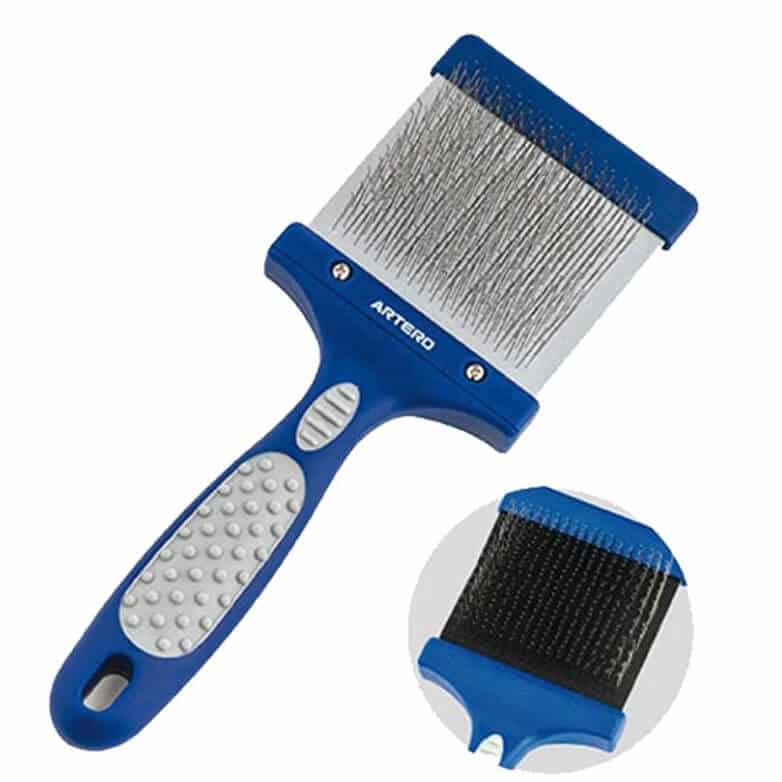
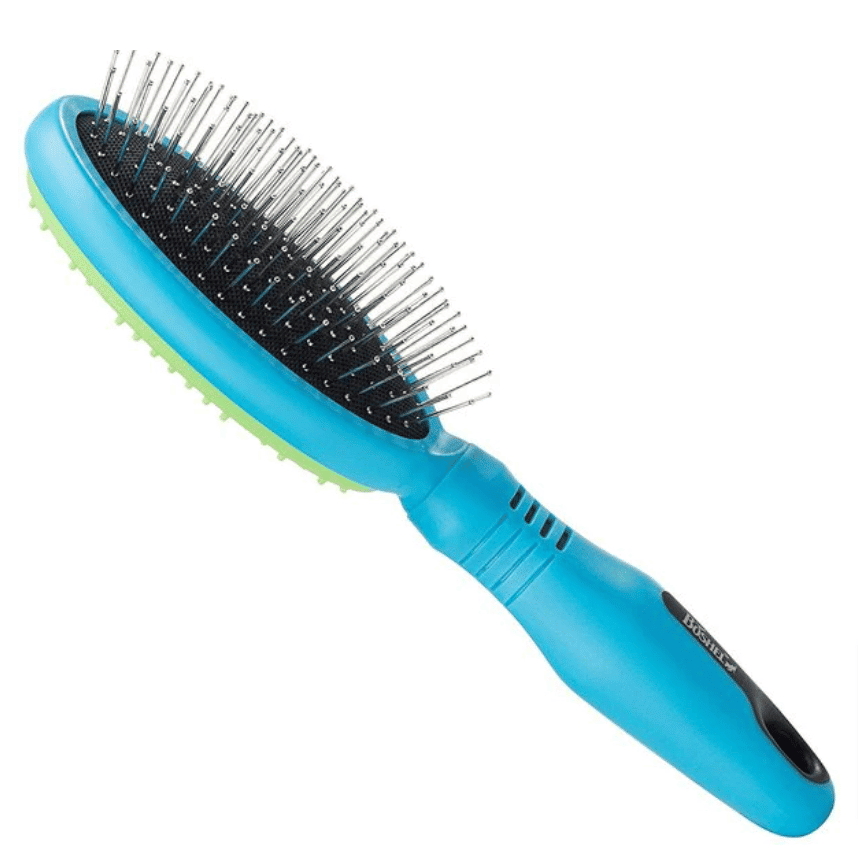
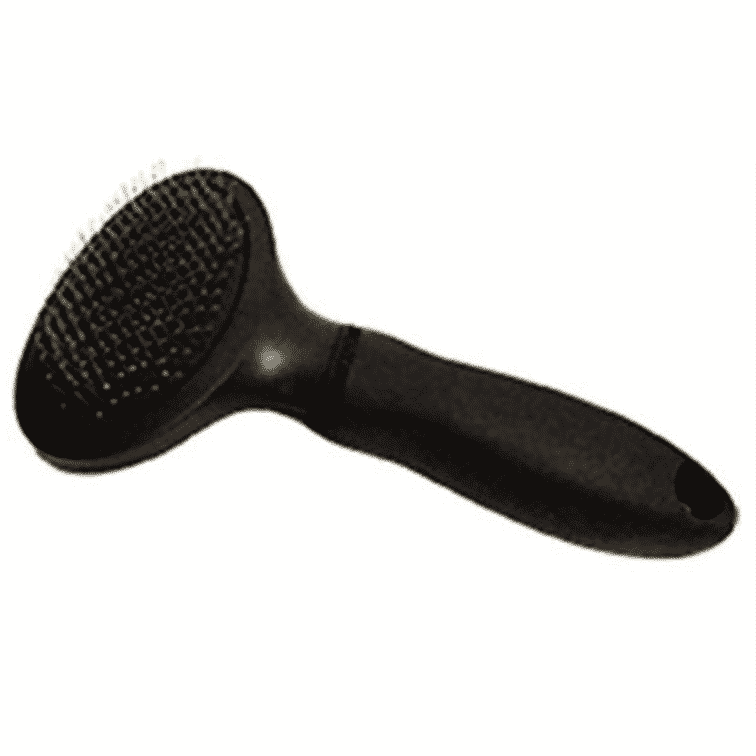

How Choosing The Correct Brush For Your Rottle Can Help Prevent Matting?
Brushing is the most effective thing you can do to prevent your Rottle from becoming matted. And it’s super easy, too! Of course, choosing the right kind of dog grooming brush is essential to make sure that you’re effectively getting rid of all tangles, mats, and loose dog hair.
The best brush for Rottles with curly coats is a slicker brush, since it’s the most effective at detagnling and deshedding even the thickest coats. If you have a wavy or straight-coated Dood, you can opt for either a slicker brush or a pin brush, whichever you prefer more and find most effective on your pooch.
But as we discussed earlier, it’s also important to pay attention to the pin size on the brush. We’ve heard from countless of our readers how they’re brushing their Doodles what seems like all the time, but they’re still struggling with mats. Oftentimes, the unsuitable pins are to blame. So, if your Rottle sports a longer hairdo, pay very close attention to the pins and ensure that they’re long enough according to their hair length.
Finally, you should also check out the overall design and construction of the brush. For Rottles, best dog grooming brushes have stainless steel pins. Plastic pins, wooden pins, or bristles aren’t a good choice for them. Likewise, the overall construction of the brush should be of high-quality so that it’s not flimsy or uncomfortable in your hands.
How Often Do You Have To Groom A Rottle?
All Rottles, regardless of their coat type, are high-maintenance when it comes to their coat care and grooming. So, how often should you brush your Rottle to prevent matting, minimize allergens, and reduce shedding? Our general recommendation for all Rottles is to brush them daily. For curly-coated Rottles, this is a must. After all, their hair can become matted very easily and quickly.
Now, wavy and straight-coated Rottles aren’t as prone to matting, and technically you could get away with brushing them about 3-4 times a week. But for the sake of establishing consistent habits, we do recommend that these dogs are also brushed daily. It’s also going to help prevent matting and minimize shedding a great deal!
To some, those daily brushing sessions might seem a lot, but it’s actually going to save you a lot of time and headache in the long run. Your Rottle’s coat won’t be as tangled and those grooming sessions won’t take up hours of your time as they would when neglecting your dog’s coat.
Still, when life gets in the way or you’re dealing with a particularly stressful period at work, it’s not uncommon for us to forget to pick up the brush for a few days or even weeks. You’re likely having to deal with severe knots and mats, even contemplating shaving off your dog’s whole hair. Fortunately, you won’t have to resort to that just yet, but can instead try the more intensive line brushing technique first.
Other Benefits Of Brushing Your Rottle Daily
But it’s not just about matting and shedding. Daily brushing sessions have many other wonderful benefits for your pooch. Firstly, as you’re brushing your Dood, you’re also coating your dog’s hair with their natural skin oils that make the coat shinier, healthier, and stronger. Secondly, it’s also beneficial for their hair growth and skin health, since brushing promotes good circulation.
And last, but not least, it’s very likely that you’ll also get to bathe your Rottle less frequently. All of that dirt, debris, and dust that’s stuck inside the coat can get super smelly in a matter of days. But not when you’re brushing it out every single day!
Can You Over-Brush A Rottle?
No, you can’t over-brush your Rottle. As long as you’re not hurting your dog by pulling the hair too forcefully or scraping their skin with the pins on the brush, you’re all good. If your dog is particularly mat-prone or sheds a lot, you might even find that brushing them a couple of times a day will give you the best results.
How To Brush A Rottle Properly?
Grab your slicker or pin brush, stainless steel comb, dog detangling spray, and follow the step-by-step guide below to learn how to brush your Rottle properly to prevent matting and minimize shedding.
Step #1
Before you start mindlessly brushing through the coat, it’s important to locate all the knots and mats inside the coat. For this, run your fingers through all areas of the fur, especially ones that are most prone to matting, such as behind the ears, collar, harness, and around the paws, tail, and bum.
Once you’ve located a mat, detangle it with your stainless steel comb, starting from the tip of the hair and slowly moving your way up towards the root as the mat loosens up. Doing this the other way around will only make the mats worse. To further make the process easier, spray on the dog detangler spray on each mat as you’re detangling them.
This step can be somewhat uncomfortable and even painful for your pup. A good trick is to hold the mat very close to the skin whilst detangling it with your comb. This will take excess pressure off the root of the hair and your dog won’t feel much of it.
Step #2
After you’ve gotten rid of the worst knots and mats, it’s time to start brushing larger areas of the coat with a slicker or pin brush. To make the hair softer and easier to manage, spray on dog detangling spray all over the coat, avoiding the eyes, nose, and mouth. By the way, this will also make the coat less tangle-prone later on.
When brushing the coat all over, you should start from the areas that are closest to the ground. First, you’ll brush the hair on the paws and feet, then legs, chest, neck, and belly. Then you can move onto the sides, bum, and tail area. Finally, you’ll brush the hair on the back of your pooch.
For the face, many people prefer to either use a smaller-sized dog grooming brush or a comb. The same goes for other small areas that are difficult to reach with a brush.
Step #3
And now the final step! If your Rottle is lacking that fluffiness and oomph, you can lift up the root of the hair with your brush or comb. A gentle teasing in upward motions will do the trick. Just don’t go overboard with it, as you don’t want the coat to become tangled again.
Best Brush For Rottle: FAQs
The best brush for Rottle is the Chris Christensen Big G Slicker Brush. This slicker brush is ahead of any others we’ve tried in terms of its effectiveness, ease of use, quality, and durability. It’s truly remarkable when working on thick and textured Rottle coats. If your Rottle isn’t super mat-prone, a good alternative is the more affordable Chris Christensen Original Series Oval Pin Brush. Make sure to also purchase a sturdy stainless steel comb for detangling knots and mats, such as the Andis Steel Greyhound Comb we reviewed above.
If your Rottle is lacking volume and fluffiness, you might want to consider whether or not you’re doing everything to keep the coat healthy and luscious. To make your Rottle fluffy, you should brush them daily, bathe them every few weeks, and trim their hair every few months. If these routines are all in place, you can also blow dry their hair after bathing to give some additional volume to the coat. Moreover, you can also fluff up the coat with a brush or comb as the final step in your Rottle’s grooming routine.
The steps for grooming a Rottle puppy are exactly the same as if you’re brushing an adult Rottle, just on a smaller body. However, we recommend you initially purchase a smaller dog grooming brush or a special puppy grooming brush for those delicate, forming months of puppyhood. Also, be super gentle when brushing your puppy, as their skin can get injured and irritated more easily than adult dogs’ skin.
Learn How to Stop Shavedowns For Good & Keep Matting At Bay!
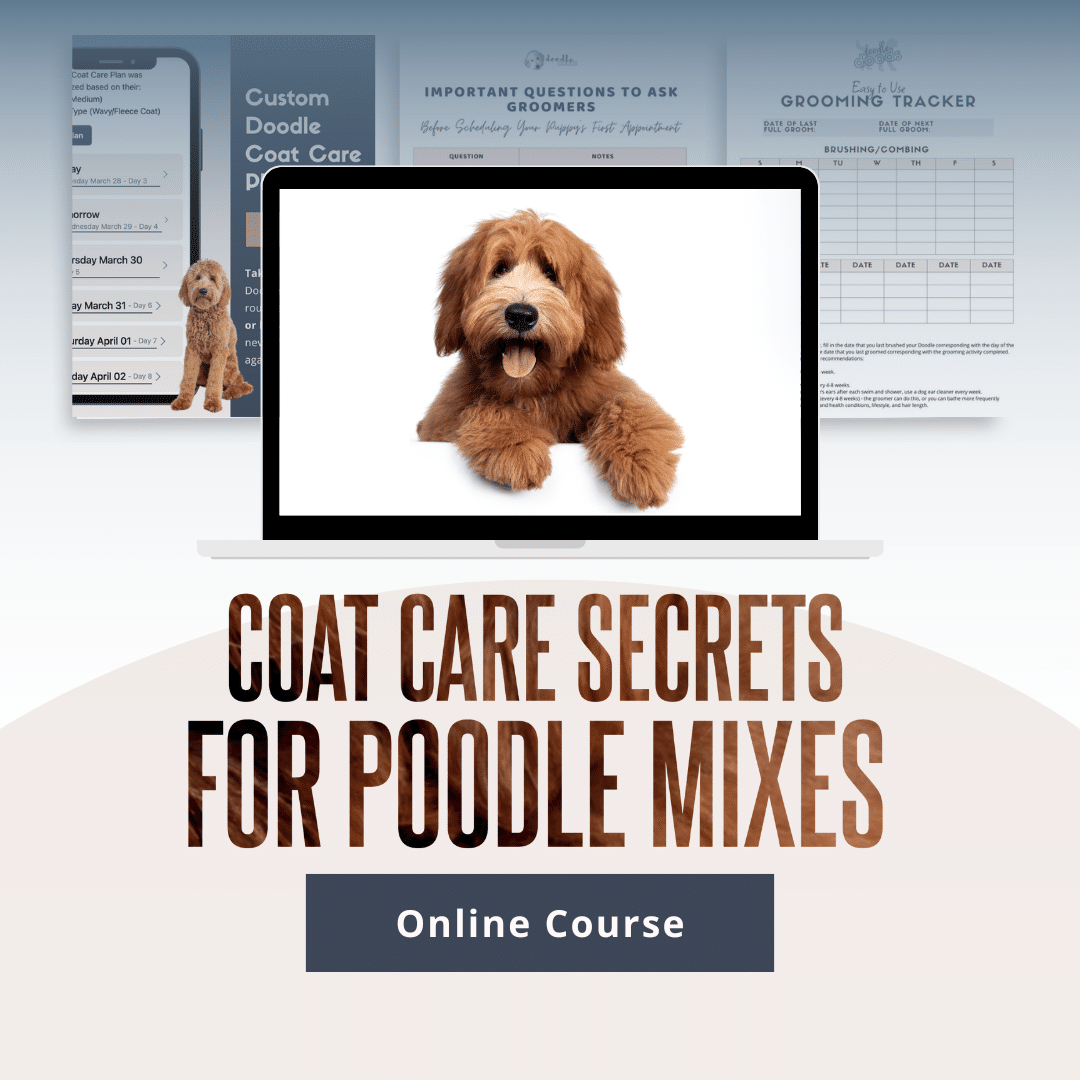
Discover the PROPER Doodle coat care routine that gets your pup to cooperate…helps you nip tangles in the bud…and gets groomers to do exactly what you want.
Plus, get $520 worth of Bonus Materials for FREE, including:- Doodle Parenthood Community and Support Group ($190 value)
- Custom Doodle Coat Care Plan Lifetime Access ($75 value)
- Easy to Use Doodle Grooming Tracker ($20 value)
- And MORE!

